U-550 (1/3)
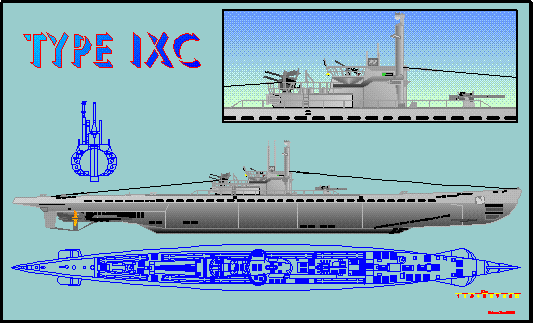
- Type:
- shipwreck, Type IXc/40 U-boat, Kriegsmarine, Germany
- Built:
- 1942, Germany
- Specs:
- ( 252 x 22 ft ) 1051 displacement tons, 48-56 crew
- Sunk:
- Saturday April 16, 1944
by depth charges and gunfire from destroyer escorts USS Gandy, USS Joyce and USS Peterson after torpedoing tanker Pan Pennsylvania - 44 casualties. - Depth:
- 300 ft

The U-550 sank precisely one ship - the tanker Pan Pennsylvania - before being sunk herself. The Pan Pennsylvania was a fat prize, loaded with AvGas for Britain, with several B-25 bombers as deck cargo. But trading an oil tanker for a submarine is no way to win a war. The Pan Pennsylvania was brand new, and you can bet we launched a replacement within a week. Germany was doomed by the industrial might of the United States.
Sinking the U-550
Coast Guard-manned Destroyer Escorts USS Joyce (DE-317) & Peterson (DE-152) Sink the U-550
by Scott Price
By 1944, German submarines no longer prowled unimpeded through Allied sea lanes. The massive increase in the numbers of new merchant and escort vessels, long-range anti-submarine aircraft, and technological advances such as radar, sonar, and the evolution of anti-submarine tactics that utilized all of these new advances were factors that blunted the Nazi's U-boat offensive. A few U-boats, however, still attempted to interdict the precious convoys and Allied escort vessels, many Coast Guard-manned, remained vigilant.
On the afternoon of 15 April 1944, the 28 merchant ships of the fast-tanker convoy CU-21 departed New York harbor for Great Britain. Poor weather conditions prohibited them from forming up into their assigned positions within the convoy, which they usually did well outside of the harbor. So instead they simply formed two columns and steamed on through the night. Their escorts for the voyage, six destroyer escorts, had rendezvoused by this time and formed up around the merchantmen, much like sheepdogs guarding a flock, their sonars probing the rough water for any sign of intruders. The six escorts formed Escort Flotilla 21.5 of Escort Division 22, commanded by Coast Guard Captain William W. Kenner. His command originally consisted of six Coast Guard-manned destroyer escorts but one, the USS Leopold (DE-319) had been lost the month before south of Iceland when a U-boat torpedoed her with the loss of 171 of her crew. Another destroyer escort from the flotilla, USS Joyce (DE-317) rescued the few Leopold survivors. A Navy-manned destroyer escort, USS Gandy (DE-764), took Leopold's place within the escort flotilla.
Fortunately, the weather cleared the next morning and the convoy's commodore, Captain E. H. Tillman, USN, the man in charge of all of the merchant ships in the convoy, ordered the merchant ships to take their appropriate places. Despite the care with which the escorts took in protecting their charges, an unannounced observer watched with interest as the large tankers maneuvered into their assigned convoy positions. The U-550, one of three U-boats that dared venture into the North Atlantic that spring, was on its first combat patrol. She had lain in wait outside New York harbor for just such an opportunity. Its young commanding officer, Kapitanleutnant Klaus Hanert, saw what every U-boat commander looked for: a straggler. This merchant ship, a tanker with a full cargo of aviation fuel, was well behind the forming convoy. What luck! Not only was she a straggler, but she was also one of the most valuable targets any U-boat could hope to attack.
As the tanker sailed ever closer to the submerged U-boat, Hanert's crew prepared their attack. He checked the range and bearing to the target and this data was fed into the torpedo aiming computer which then prepared the torpedo for its run. Once ready, Hanert gave the order to fire. A little after 0800 the single torpedo hit the port side of the SS Pan Pennsylvania, the largest tanker in the world at that time. It carried a highly combustible cargo of 140,000 barrels of 80-octane aviation fuel, a fact not lost on its 50-man crew or the 31 members of her Naval Armed Guard.
Many men panicked and leapt into the water while others attempted to launch a lifeboat without waiting for the order to abandon ship or for the Pan Pennsylvania to come to a complete stop. The lifeboat capsized and spilled the men into the frigid water. Luckily the cargo did not explode but only began to catch fire. But the explosion did cut communications between the bridge and the engine room. The tanker's master sent the chief engineer to check on the conditions in the engine room while he informed the convoy commander of his predicament. He then searched the ship to make sure that no remaining crewmen were trapped as the huge tanker began to settle by the stern.
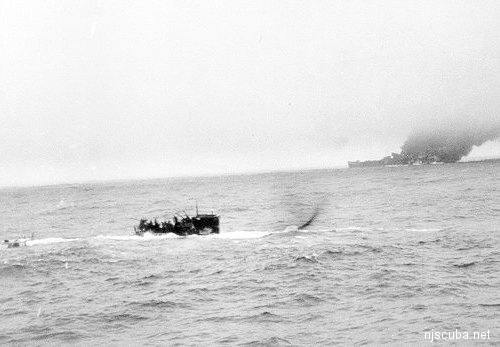
In an effort to evade an inevitable counterattack by the escorts, Hanert attempted to place his submerged U-boat near the sinking tanker, hoping it would mask his presence. Unbeknownst to him, however, the escorts were also heading in that direction, as Kenner immediately ordered the Joyce to retrieve the survivors. He then ordered USS Peterson and the Gandy to screen the rescue effort, and the three destroyer escorts broke formation and sailed toward the stricken tanker, all with their sonar equipment actively pinging the area. The situation on board the Pan Pennsylvania worsened. The chief engineer inspected the engine room and saw what the men feared most. A fire had broken out and was spreading. The engineer reported back to the tanker's master who then gave the order to abandon ship. The tanker continued to settle by the stern and developed a list to port but the crew managed to launch two lifeboats and three life rafts before the ocean's surface began to wash over the tanker's large deck.
Joyce hove to, near the doomed ship, and its crew quickly went to work retrieving the survivors. There were so many, in fact, that Peterson had to lend a hand. Joyce's crew pulled 31 men from the lifeboats and rafts and Peterson's crew saved 25, but 25 others remained unaccounted for. The tanker continued to settle and then slowly capsized. As Joyce prepared to get underway, her sonar operator obtained a contact at 1,800 yards. Hanert, growing uneasy so near a sinking ship, had attempted to slowly and quietly move away from the drowning behemoth. U-550's engineer later told interrogators, "We waited for your ship to leave; soon we could hear nothing so we thought the escort vessels had gone, but as soon as we started to move -- bang!"
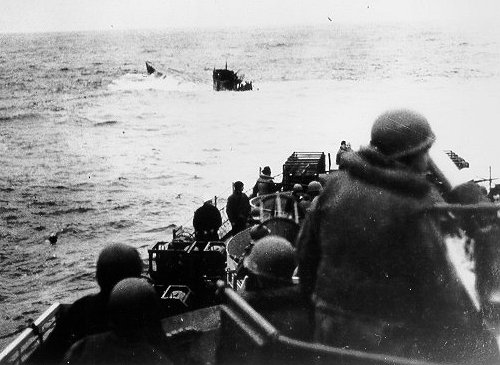
Joyce's commanding officer, Lieutenant Commander Robert Wilcox, USCG, gave orders to prepare to attack and brought the warship to flank speed. Joyce radioed the other two destroyer escorts about the contact as her crew prepared to drop depth charges. Gandy formed up behind Joyce to carry out a synchronized attack. Peterson sailed close behind her sisters. As Joyce passed over the sound contact, her crew dropped 13 depth charges, all set to a shallow setting. In a perfectly timed and executed attack, the depth charges bracketed the submerged submarine and exploded, literally blowing the U-550 out of the water. The depth charges were so well placed, reported another German survivor, that one depth charge actually bounced off the submerged U-boat's deck plating before it exploded.
The sailors saw the U-boat's bow break the surface and both Gandy's and Peterson's commanding officers gave the order to ram. At the same time, the three destroyer escorts opened fire on the hapless Germans but the two Coast Guard-manned warships ceased firing as the Gandy (USN) unadvisedly sailed between them and the submarine. Peterson veered off as Gandy closed with the German submarine.
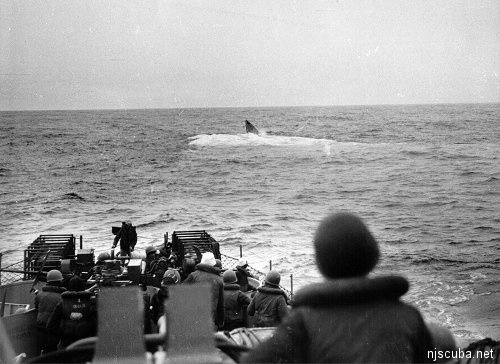
Gandy slammed into the U-550 abaft the conning tower, damaging the U-boat further and Peterson fired two depth charges from her "K" guns, which exploded along the side of the German submarine. Once Gandy was clear, all three destroyer escorts again opened fire, preventing the German crew from attempting to man their deck guns. Nevertheless, a number of U-boatmen attempted just that and were cut down as they exited their hatches. When Gandy ceased firing, more Germans attempted to man the after machine gun and actually managed to open fire briefly before the concentrated fire from all three destroyer escorts mowed each one down and laid waste to the conning tower.
U-550 continued taking on water and dipped lower within the sea. The surviving U-boatmen, realizing their submarine was doomed, first set their scuttling charges and attempted to abandon ship. The charges exploded quickly, and the U-boat quickly settled by the stern and then sank beneath the waves, trapping most of the crew within its hull. The destroyer escorts ceased firing and sailed in close to rescue the few survivors, men who they were attempting to kill only a few moments before. Joyce managed to pull thirteen German sailors from the water, including U-550's commander, but the rest of the U-boat's crew went to the bottom with their submarine. As the three destroyer escorts sailed back to the convoy, the Gandy's crew patched the damage they received when they rammed U-550. The now-capsized Pan Pennsylvania lay against the horizon, a solemn reminder of just how deadly the Battle of the Atlantic still was. The smoking hulk was sunk by gunfire two days later.
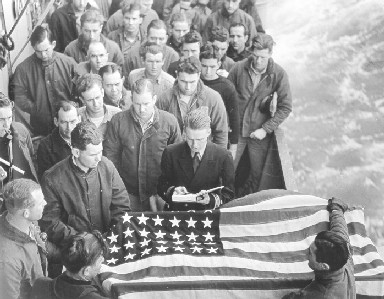
One of the rescued U-boatmen, Heinrich Wenz, later died from his wounds. LCDR Wilcox conducted a funeral service and then committed Wenz's body to the sea. The convoy continued on to Britain, despite the loss of the Pan Pennsylvania, and arrived there unscathed. In a gruesome side script to the story, apparently, some of the German crewmen survived the sinking of their U-boat in their forward watertight compartments. Over the next few hours or days, they attempted to eject from their sunken submarine to reach the surface with their escape equipment but unfortunately perished in the attempt. A few of their bodies were recovered floating off the coast a few days later, fueling speculation that some Germans actually made it to shore along the U.S. coast.
As for the attack, a mere thirteen minutes passed from the moment Joyce detected U-550 to the time the U-boatmen abandoned ship, an indication of the effectiveness of Allied anti-submarine capabilities and the teamwork demonstrated between the escorts.
The Navy ended up crediting all three destroyer escorts with the kill, but noted, "the [depth charge] pattern dropped by the Joyce was accurate. There is no doubt that it threw the sub out of control and caused it to surface, if not causing greater damage."
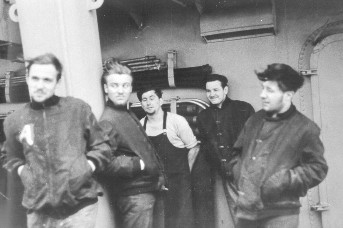
Right: U-550 survivors aboard Joyce
Both Hanert and Wilcox survived the war. One of the surviving junior officers of the U-550, Hugo Renzmann, met with Wilcox in 1960 in New York City to discuss the battle. As a Coast Guard press release noted, "they shook hands and immediately began relating events which led up to their first meeting. It was like two avid sports enthusiasts telling each other how they won or lost the previously played game."
from Coast Guard records
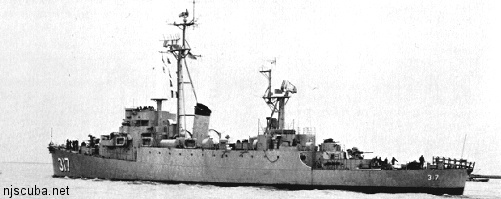
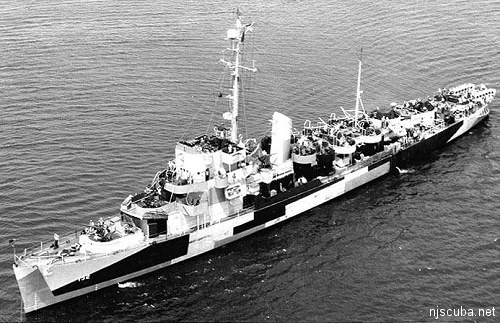
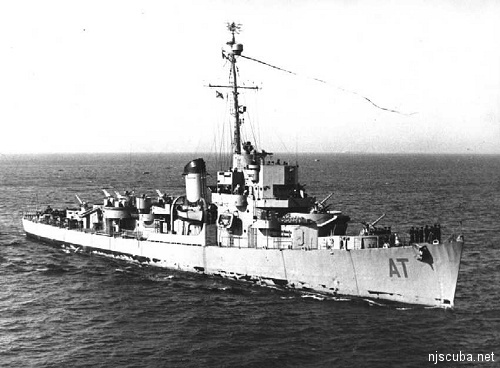
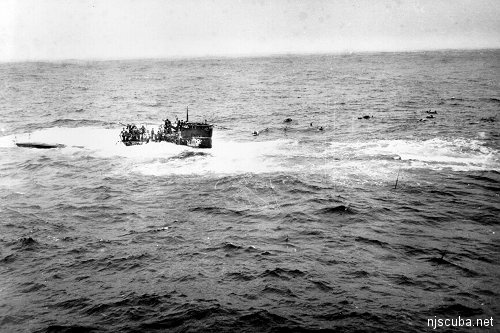
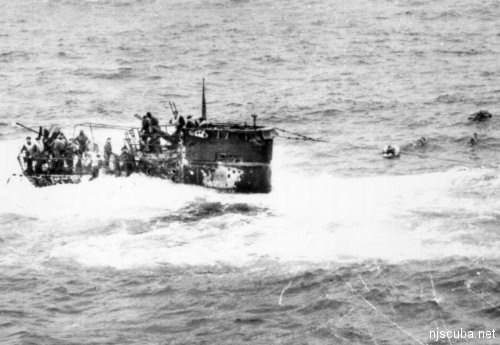
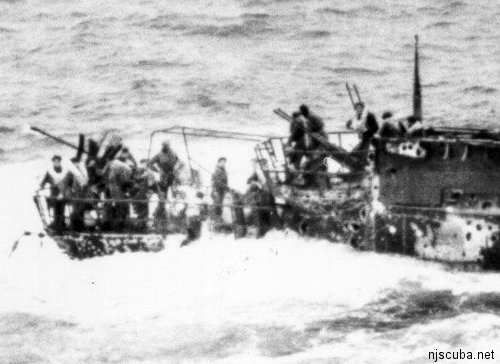
If this doesn't make sense, it is because it is not true - the Germans never fired on the DEs. Look at the picture - no one is manning a gun, the guns are all pointing at the sky. The three DE's, however, surrounded the sinking sub in a crossfire, attacking fiercely and probably taking hits from each other in the process. A stray shot from the Gandy even set the Pan Pennsylvania on fire.
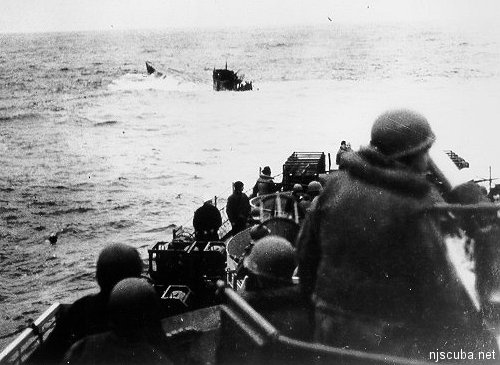
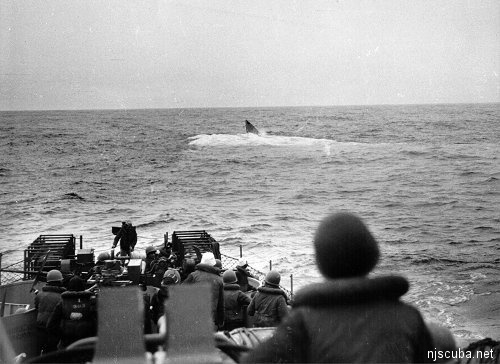
Photographed from USS Joyce DE-317

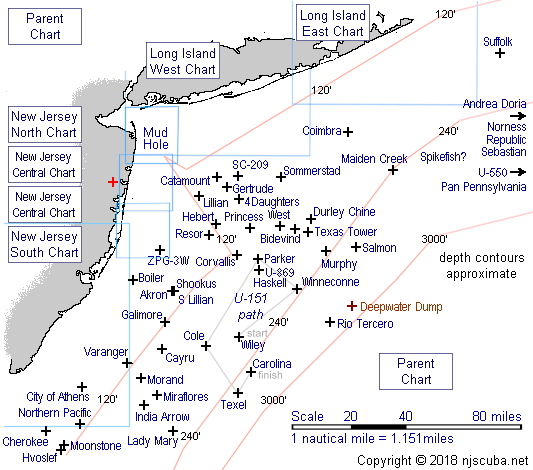
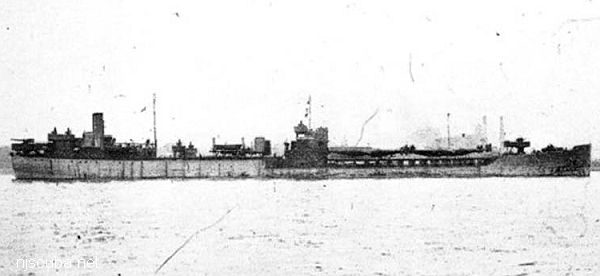
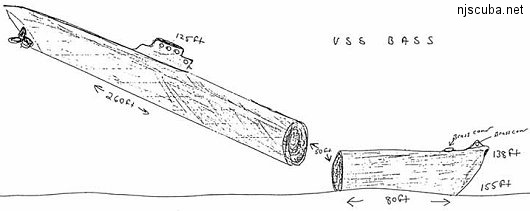
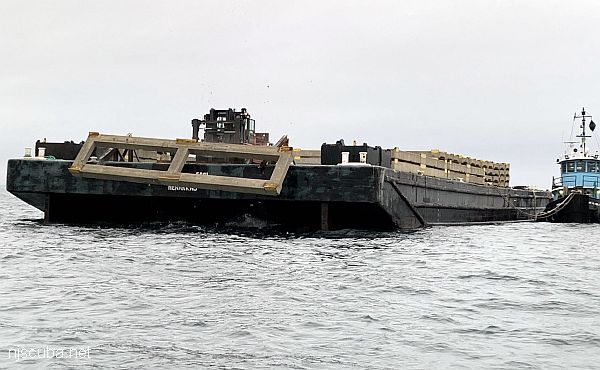
Questions or Inquiries?
Just want to say Hello? Sign the .